The changing face of Tijuana's art and architecture landscape
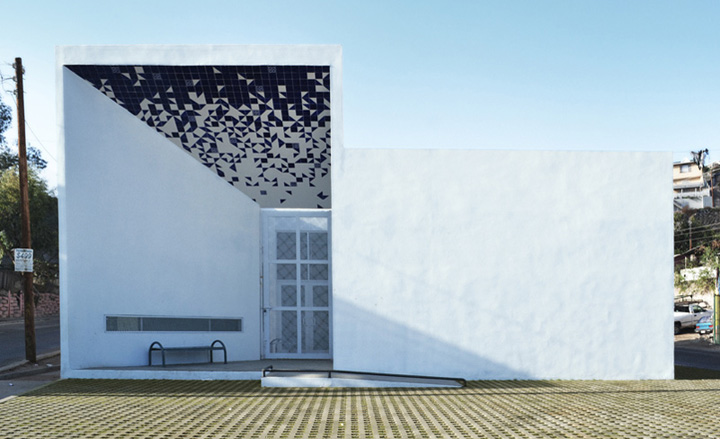
Tijuana, the Mexican border town south of San Diego, has had, until recently, a reputation as a lawless enclave of vice and drugs, a destination for debauched American tourists and the turf of violent cartels. Despite dwindling tourist numbers and high crime rates - which spiked in the late 2000s - the city's creative class has been keeping busy, and its rising stars in architecture and cuisine are now earning international attention. In recognition of a rash of bold new buildings and cultural initiatives across the city, the LA-based gallerist Steve Turner recently launched Art Baja Tijuana, an annual festival of contemporary art.
Its first incarnation may have been modest in size, but Turner hopes to attract international collaborators in the future, and is planning to host festival events in various architecturally remarkable buildings around the city each year. For its inaugural outing, the main exhibition took place in a new residential house designed by Jorge Gracia, one of the city's most exciting architects.
Some of the artists involved in the festival, such as Petra Cortright and Fabiola Torres-Alzaga, were chosen from Turner's gallery roster; others, such as New Yorker Aaron Aujla, were picked for their relevance to the show's architectural theme. New talents included the emerging LA-based sound artist Tyler Adams and the Tijuanan street artist PANCA. All showed new work, some of which, like Pablo Rasgado's installation 'Anulación', was specially commissioned. Across town from Casa GS, Rasgado had sealed the windows and doors in a derelict pharmacy to transform the building into a giant, site-specific sculpture.
In tandem with Art Baja Tijuana, a food and architecture tour took us on a journey around notable buildings across the city. The first stop was the striking extension to CECUT - the Centro Cultural Tijuana - designed by Eugenio Velázquez in 2008. The giant sphere of CECUT's central IMAX cinema, built nearly 30 years ago, has become one of the city's landmarks, alongside its 200-foot steel arch (which replicates St Louis' Gateway Arch in the US) erected to celebrate the millennium.
Aside from some impressive Spanish Revival architecture dating from Tijuana's heyday as a gambling capital in the 1930s, much of the city seems unplanned and carelessly constructed. Many residential neighbourhoods grew from temporary migrant settlements, especially after the devastating Mexico City earthquake of 1985. Gracia says he sees Tijuana today as a blank canvas; there is plenty of cheap land, low labour costs, few building regulations and clients are open to experimentation. 'It's like a lab,' he says. His elegant Culinary Art School building, now three years old, combines affordable materials such as rusted steel, poured concrete and garapa wood.
The poor Camino Verde neighbourhood has been particularly afflicted by gang violence. A new community centre, designed by Ramón Guillot, and an award-winning digital library known as Casa de las Ideas, by CRO studio, are both sited on reclaimed land between two gang territories, next to a new park, outdoor gym and skate-park.
At the other end of the economic spectrum is Guillot's 14-floor office building, VIA Corporativo. It is Baja California's first LEED-certified, 'green' building, and also contains the high-end restaurant Mision 19, run by Tijuana's acclaimed chef Javier Plascencia. The marriage between gastronomy, architecture and art promises to drive Tijuana's future, as new businesses open, the art fair raises its profile and culinary empires - such as Plascencia's - continue to grow.
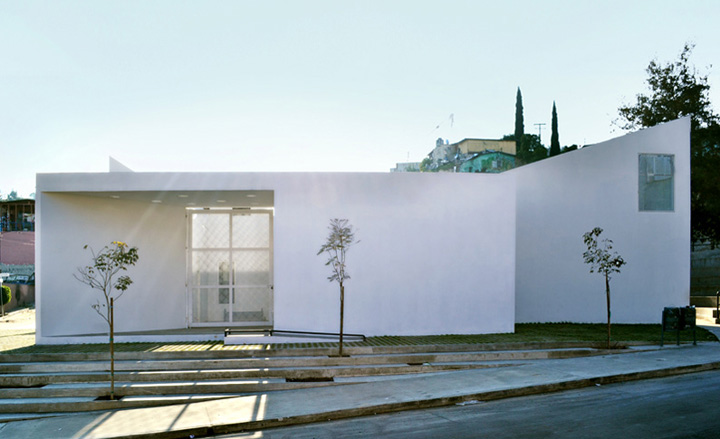
Deliberately open to its surroundings, Modulo Prep Library's pristine white walls have yet to be tagged in an area plagued by graffiti
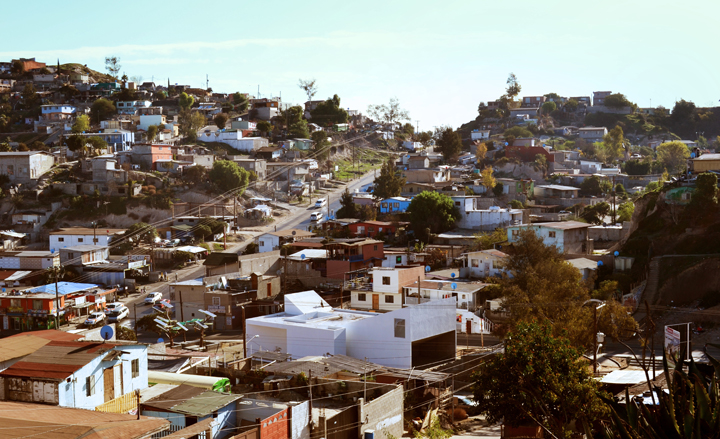
An aerial view of Modulo Prep Library
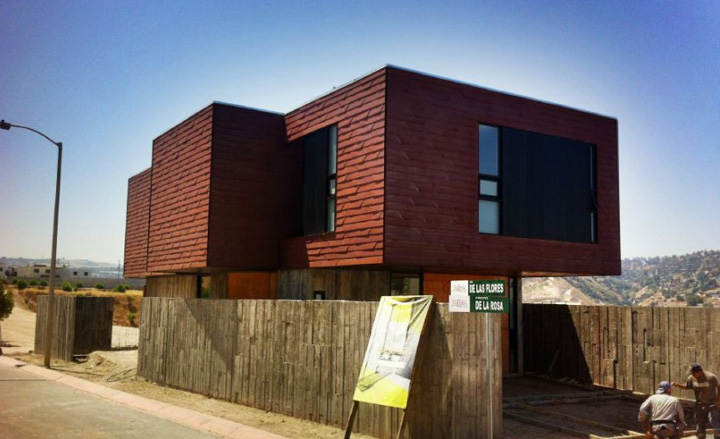
Jorge Gracia, one of the city's most exciting architects, designed Casa GS for his brother on a plot of undeveloped land with sweeping views. Board-formed concrete contrasts with the rusted steel siding of the building
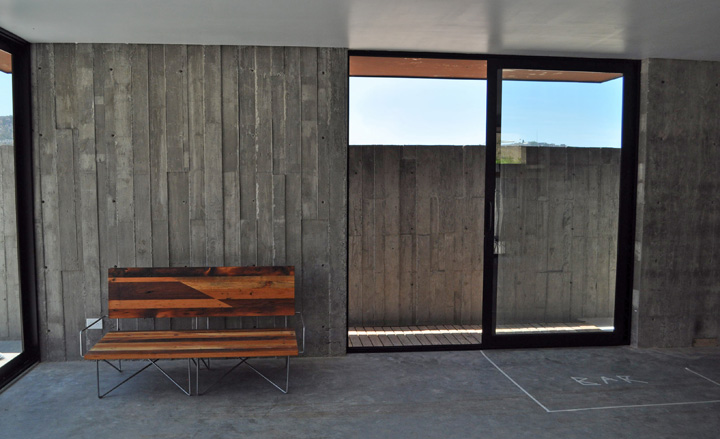
Casa GS is a typical Gracia building in that it deliberately ignores the aesthetic of its surroundings; ‘I don’t care about what happened before,’ says the architect. The house served as the main exhibition space for Art Baja Tijuana
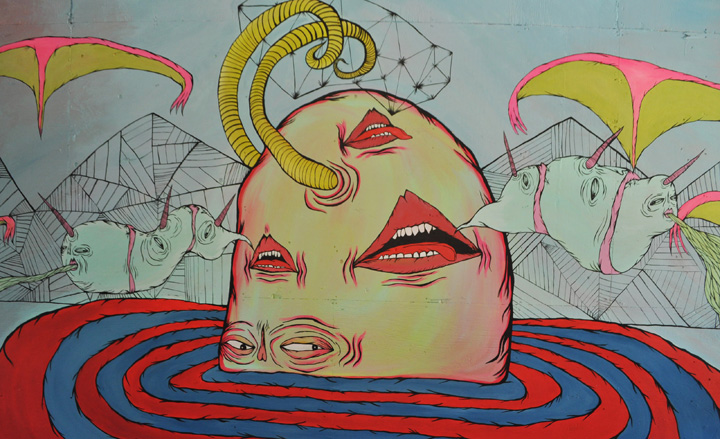
A mural by Tijuanan street artist PANCA, specially commissioned for Art Baja Tijuana, occupies an interior wall in Casa GS
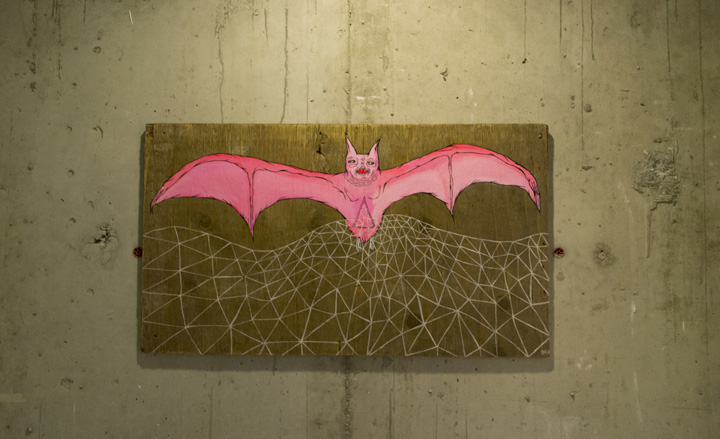
This other mural by PANCA has been painted directly onto the scraps of waste wood that were left over from the construction of Casa GS
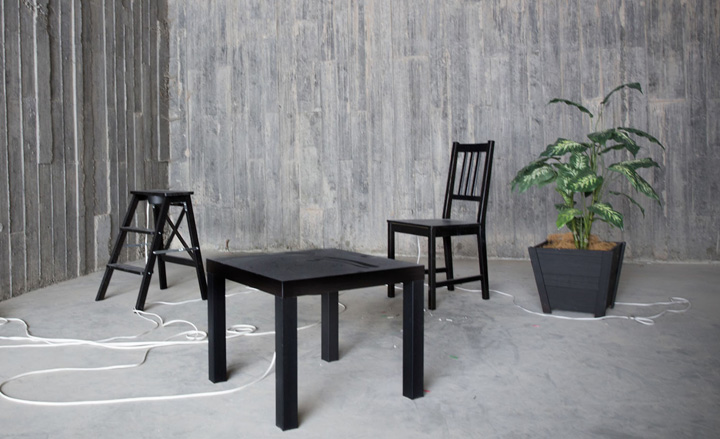
In the basement of Casa GS, sound artist Tyler Adams played amplified frequencies through furniture, making it move across the floor as it vibrated

The roof of Via Corporativo has a ‘walk and talk’ track, inspired by the Michael J. Fox film ‘The Secret of My Success’
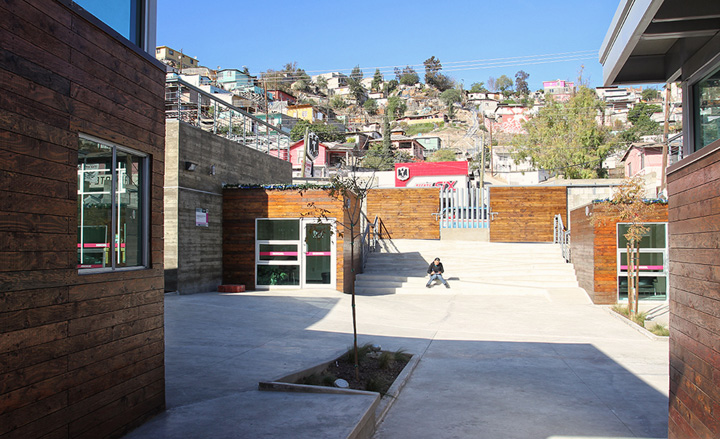
The Camino Verde community centre, is built on reclaimed land over a canal that runs along the bottom of a canyon
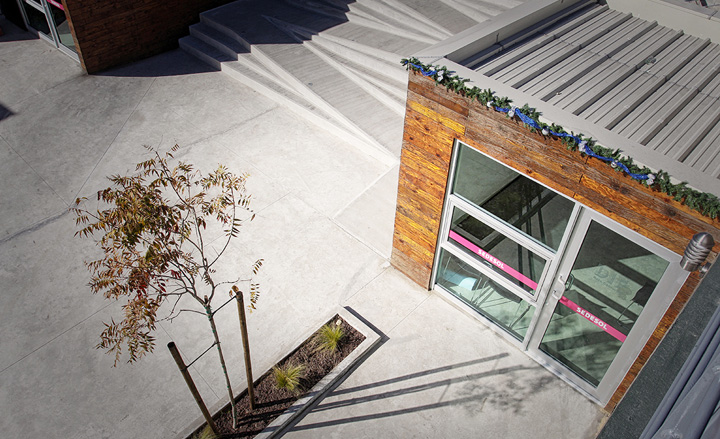
Rival gang members, from opposing sides of the canyon, now meet to take their kids to dance classes at the Camino Verde community centre
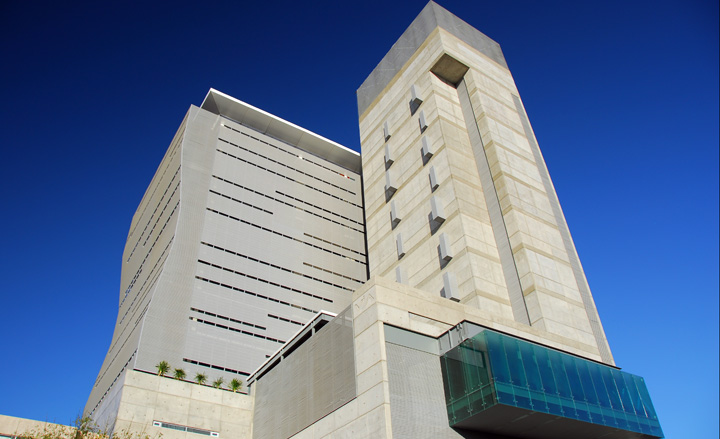
At the other end of the economic spectrum is Ramón Guillot’s 14-floor office building, VIA Corporativo. It is Baja California's first LEED-certified, 'green' building. One side of VIA Corporativo is convex, to repel the hot inland Santa Ana winds, while the opposite side is concave, to harness the cooling ocean breezes
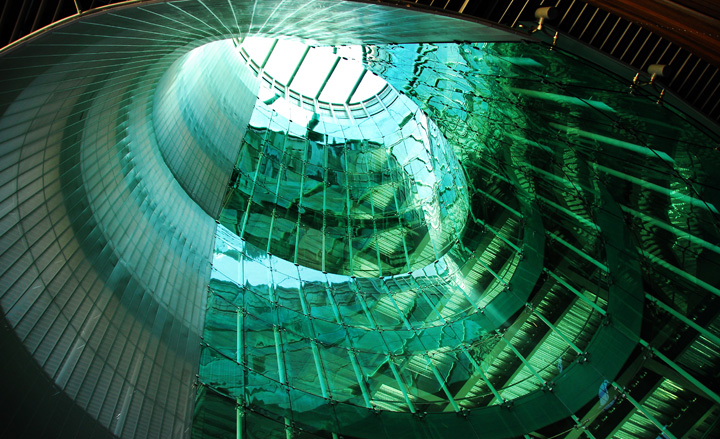
A huge vertical cavity rises from the 4th floor to the roof, allowing light and air to reach inside the building
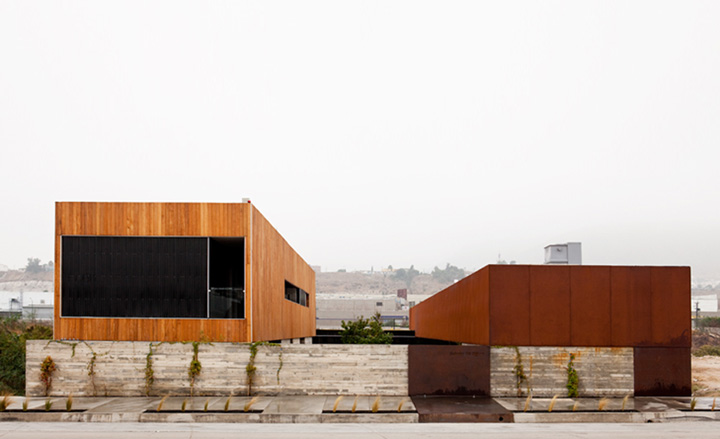
Water runs over black basalt steps at the entrance to the Culinary Art School by Jorge Gracia. The building is an enclosed sanctuary for study and discussion

The floor of a cool basement conference and dining room in the Culinary Art School is formed from loose black gravel
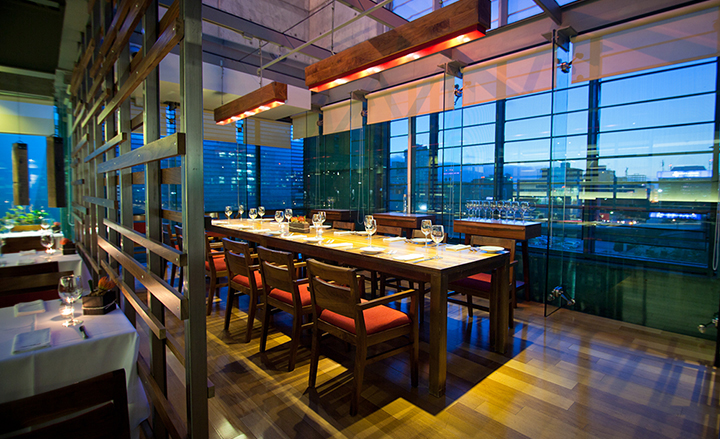
Chef Javier Plascencia’s flagship restaurant Mision 9 is surrounded by windows, so diners can never forget they are in Tijuana
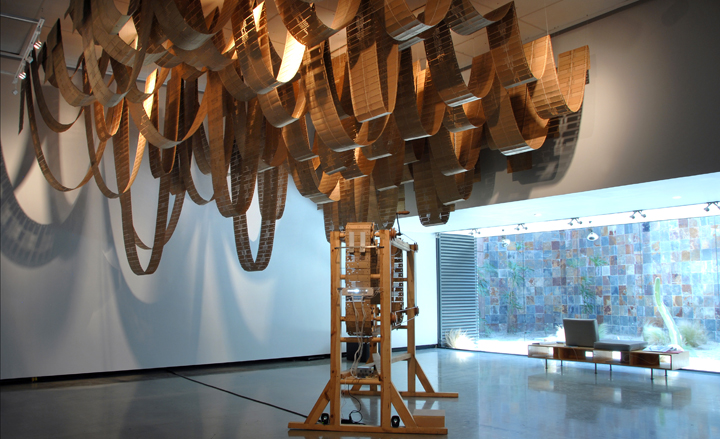
'Telar', by Tania Candiani, an installation from the 'Teoría de la Entropía' exhibition, curated by Bárbara Perea, on show in El Cubo, which occupies part of the CECUT (Centro Cultural Tijuana) building
Wallpaper* Newsletter
Receive our daily digest of inspiration, escapism and design stories from around the world direct to your inbox.
-
 Naoto Fukasawa sparks children’s imaginations with play sculptures
Naoto Fukasawa sparks children’s imaginations with play sculpturesThe Japanese designer creates an intuitive series of bold play sculptures, designed to spark children’s desire to play without thinking
By Danielle Demetriou
-
 Japan in Milan! See the highlights of Japanese design at Milan Design Week 2025
Japan in Milan! See the highlights of Japanese design at Milan Design Week 2025At Milan Design Week 2025 Japanese craftsmanship was a front runner with an array of projects in the spotlight. Here are some of our highlights
By Danielle Demetriou
-
 Tour the best contemporary tea houses around the world
Tour the best contemporary tea houses around the worldCelebrate the world’s most unique tea houses, from Melbourne to Stockholm, with a new book by Wallpaper’s Léa Teuscher
By Léa Teuscher
-
 Tour the wonderful homes of ‘Casa Mexicana’, an ode to residential architecture in Mexico
Tour the wonderful homes of ‘Casa Mexicana’, an ode to residential architecture in Mexico‘Casa Mexicana’ is a new book celebrating the country’s residential architecture, highlighting its influence across the world
By Ellie Stathaki
-
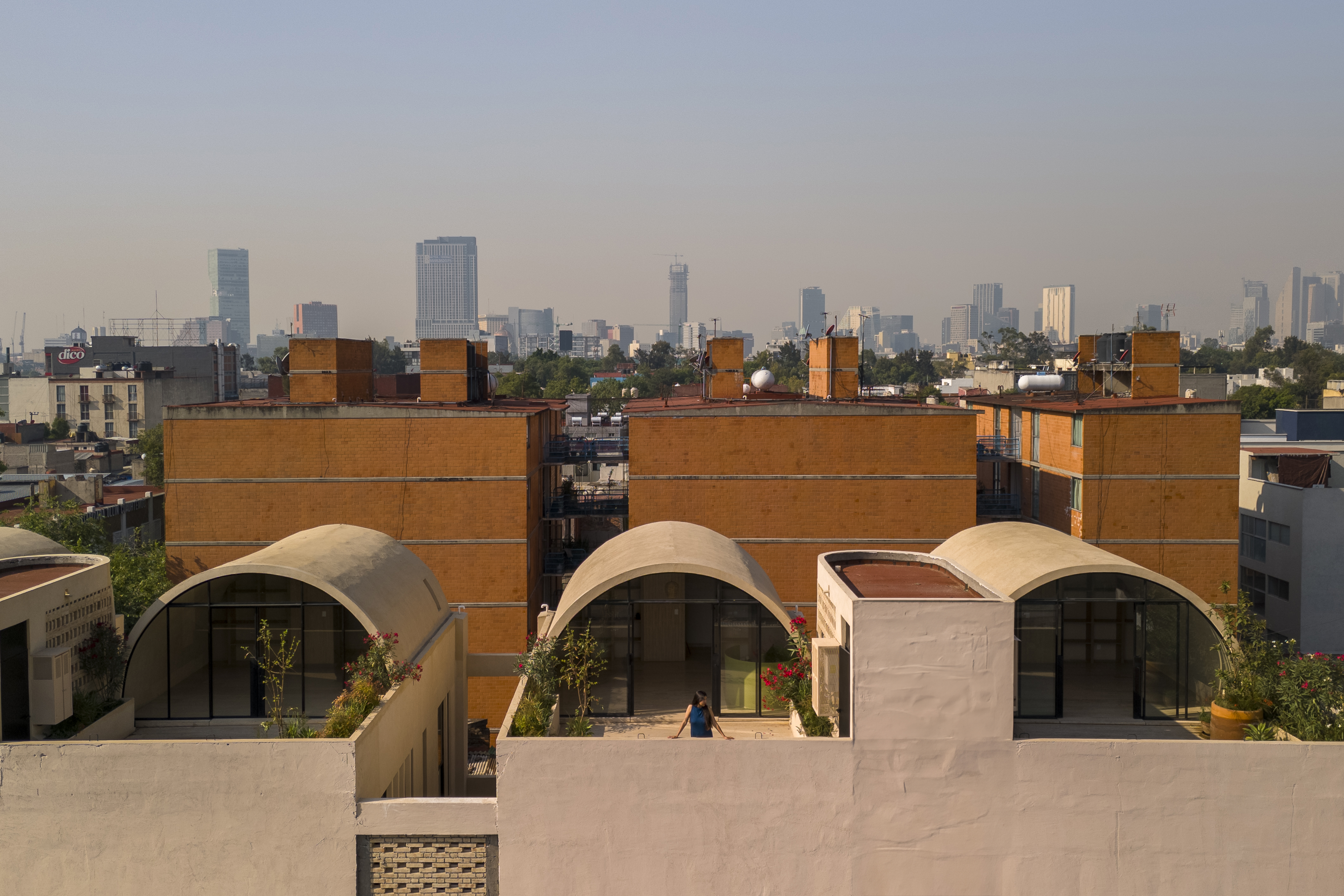 A barrel vault rooftop adds drama to these homes in Mexico City
A barrel vault rooftop adds drama to these homes in Mexico CityExplore Mariano Azuela 194, a housing project by Bloqe Arquitetura, which celebrates Mexico City's Santa Maria la Ribera neighbourhood
By Ellie Stathaki
-
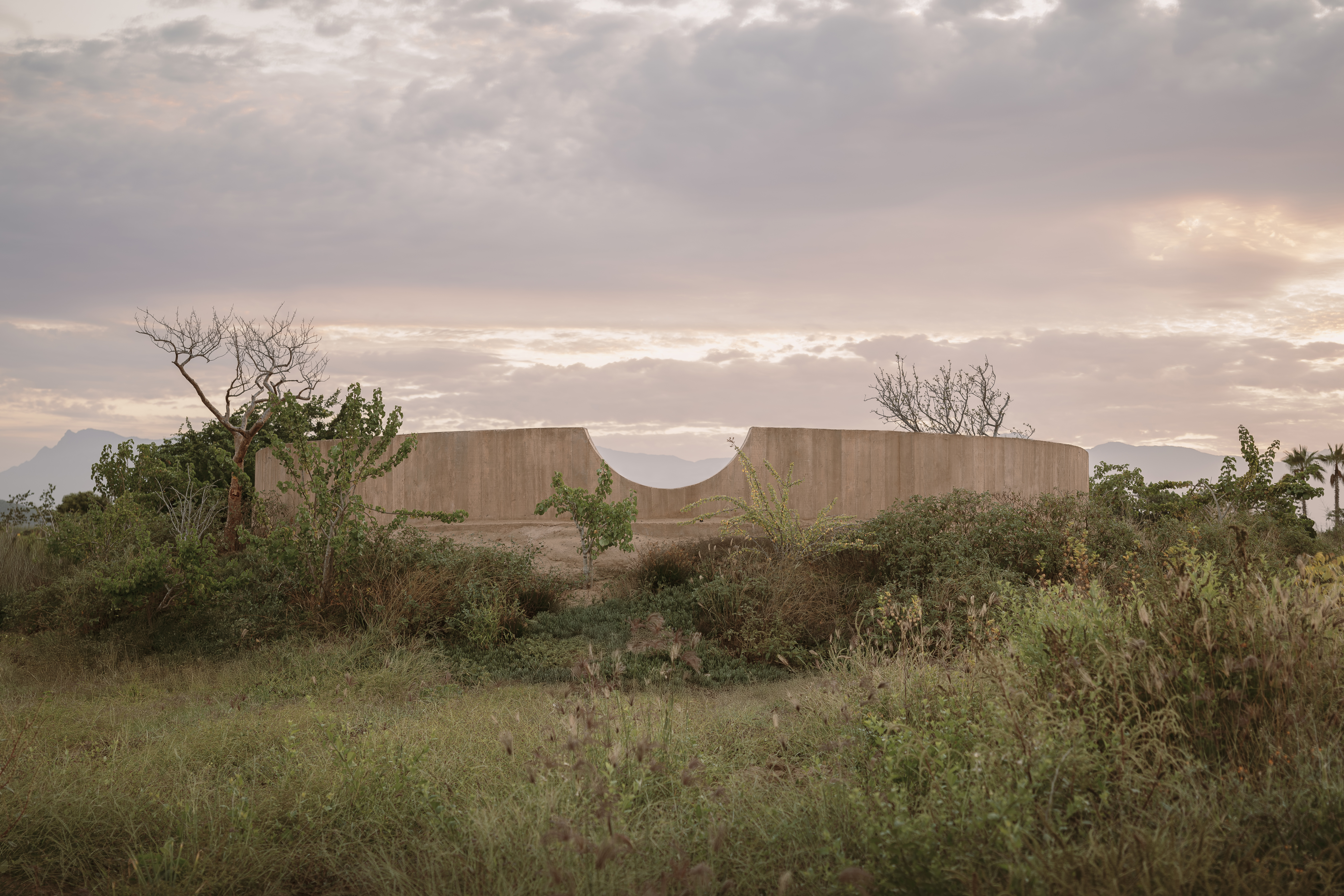 Explore a minimalist, non-religious ceremony space in the Baja California Desert
Explore a minimalist, non-religious ceremony space in the Baja California DesertSpiritual Enclosure, a minimalist, non-religious ceremony space designed by Ruben Valdez in Mexico's Baja California Desert, offers flexibility and calm
By Ellie Stathaki
-
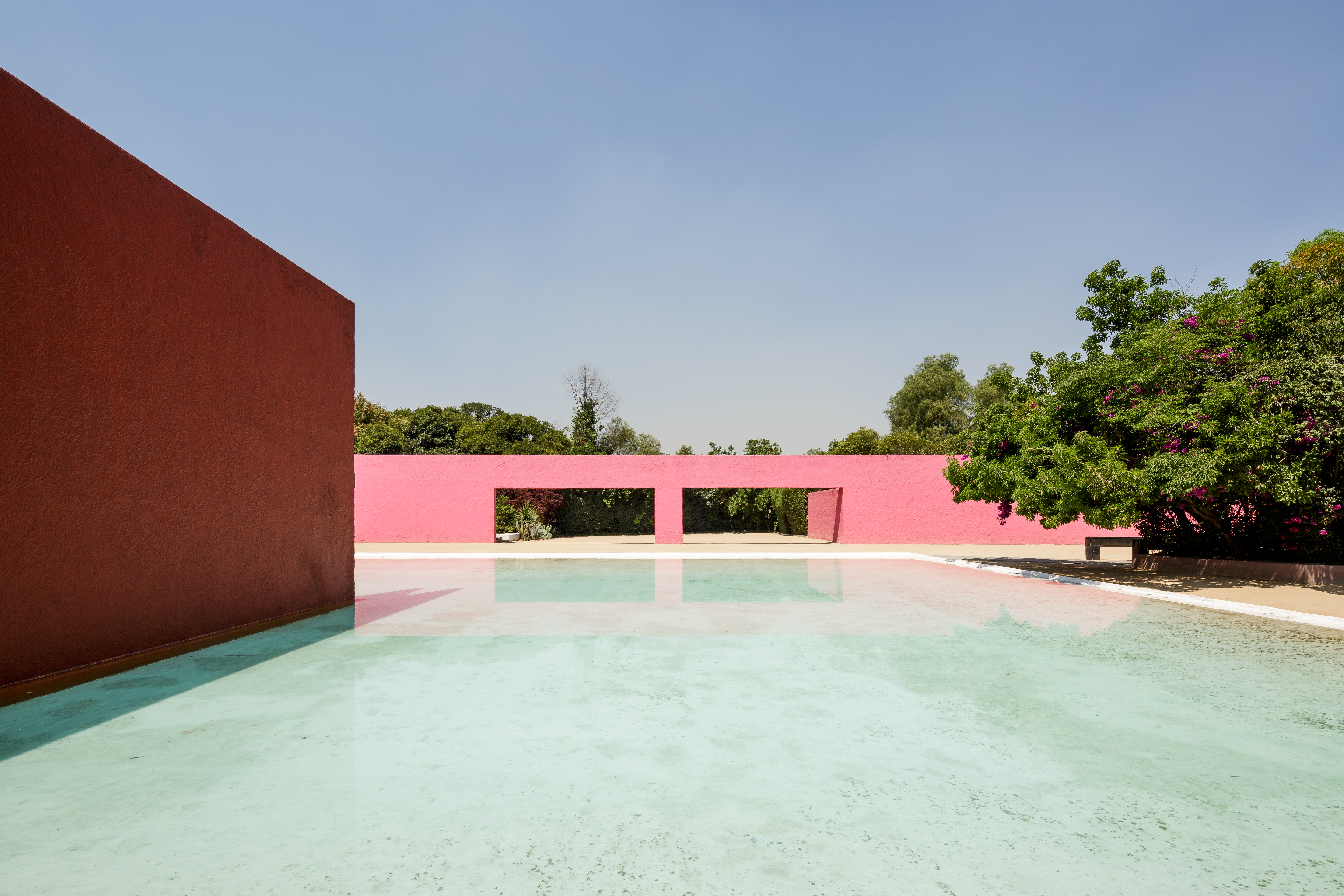 La Cuadra: Luis Barragán’s Mexico modernist icon enters a new chapter
La Cuadra: Luis Barragán’s Mexico modernist icon enters a new chapterLa Cuadra San Cristóbal by Luis Barragán is reborn through a Fundación Fernando Romero initiative in Mexico City; we meet with the foundation's founder, architect and design curator Fernando Romero to discuss the plans
By Mimi Zeiger
-
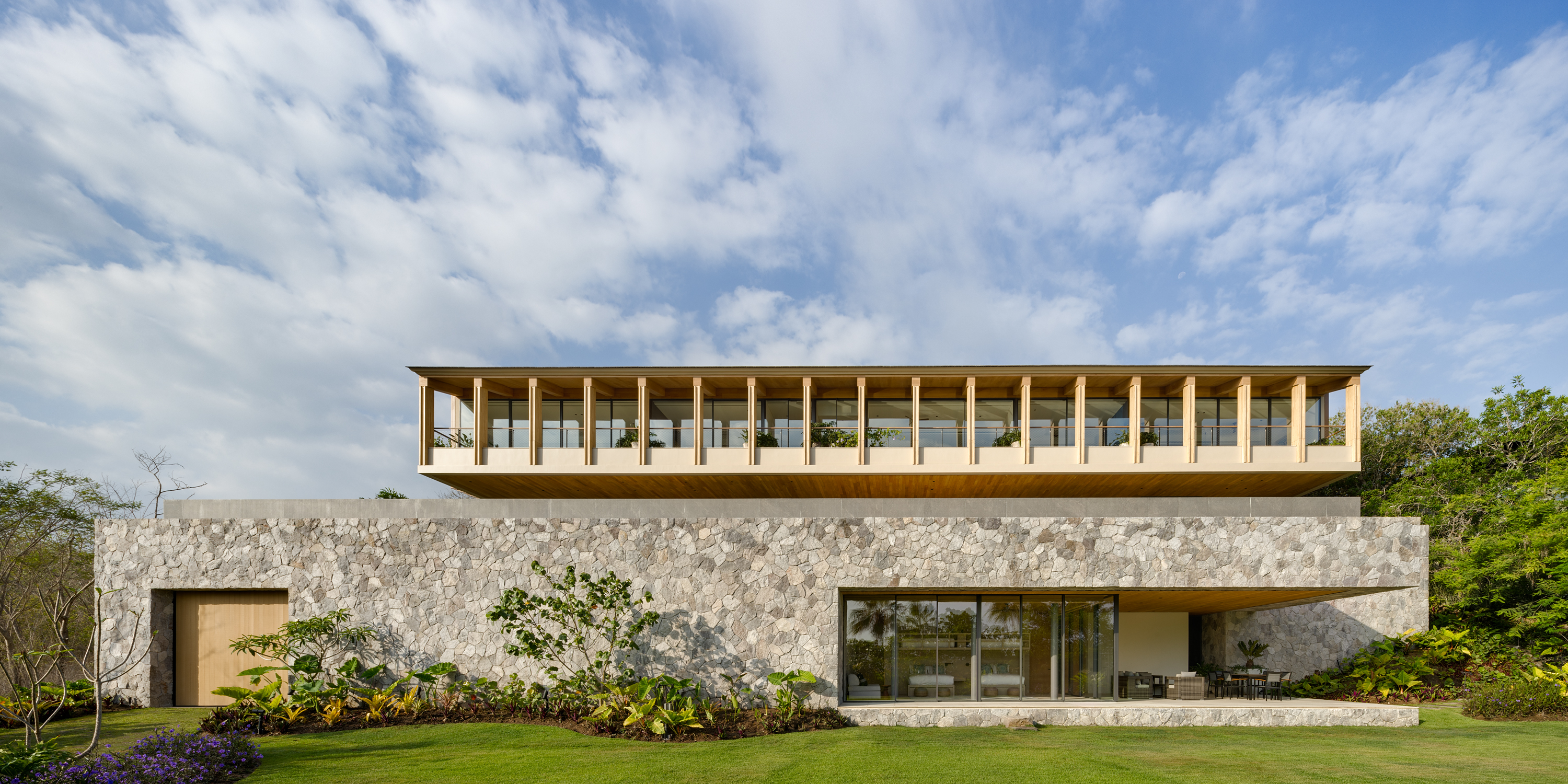 Enjoy whale watching from this east coast villa in Mexico, a contemporary oceanside gem
Enjoy whale watching from this east coast villa in Mexico, a contemporary oceanside gemEast coast villa Casa Tupika in Riviera Nayarit, Mexico, is designed by architecture studios BLANCASMORAN and Rzero to be in harmony with its coastal and tropical context
By Tianna Williams
-
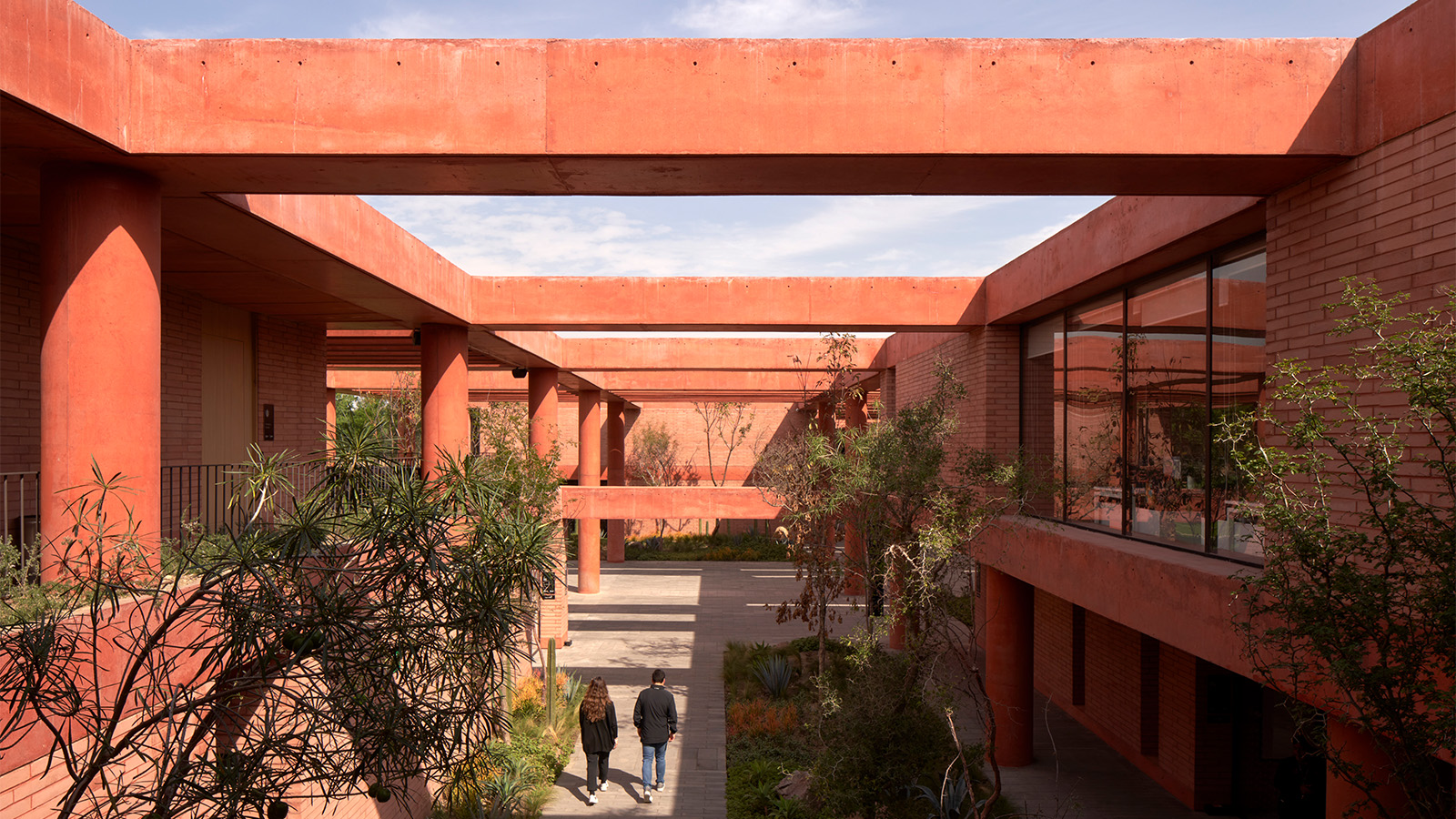 Mexico's long-lived football club Atlas FC unveils its new grounds
Mexico's long-lived football club Atlas FC unveils its new groundsSordo Madaleno designs a new home for Atlas FC; welcome to Academia Atlas, including six professional football fields, clubhouses, applied sport science facilities and administrative offices
By Tianna Williams
-
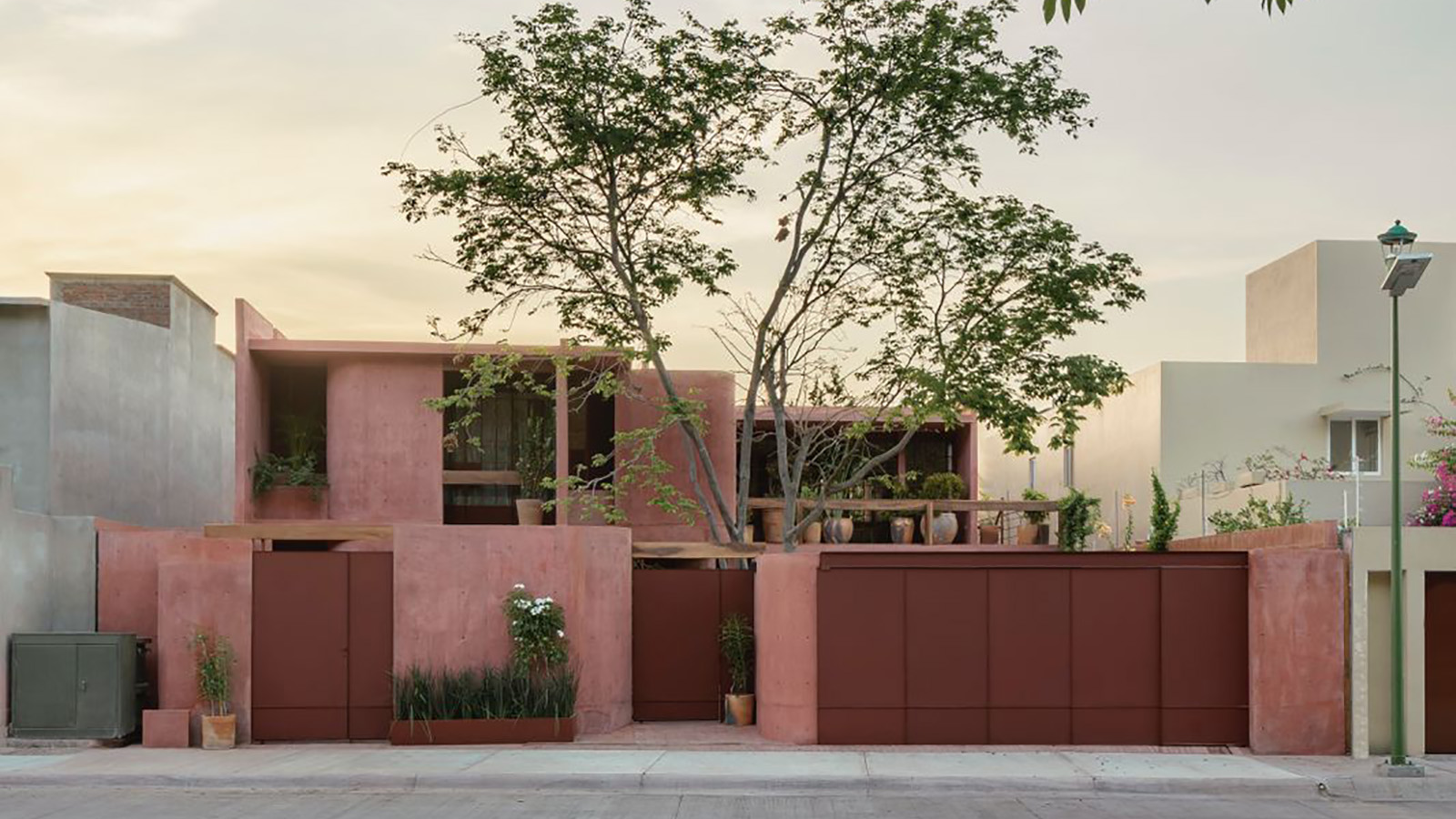 Discover Casa Roja, a red spatial exploration of a house in Mexico
Discover Casa Roja, a red spatial exploration of a house in MexicoCasa Roja, a red house in Mexico by architect Angel Garcia, is a spatial exploration of indoor and outdoor relationships with a deeply site-specific approach
By Ellie Stathaki
-
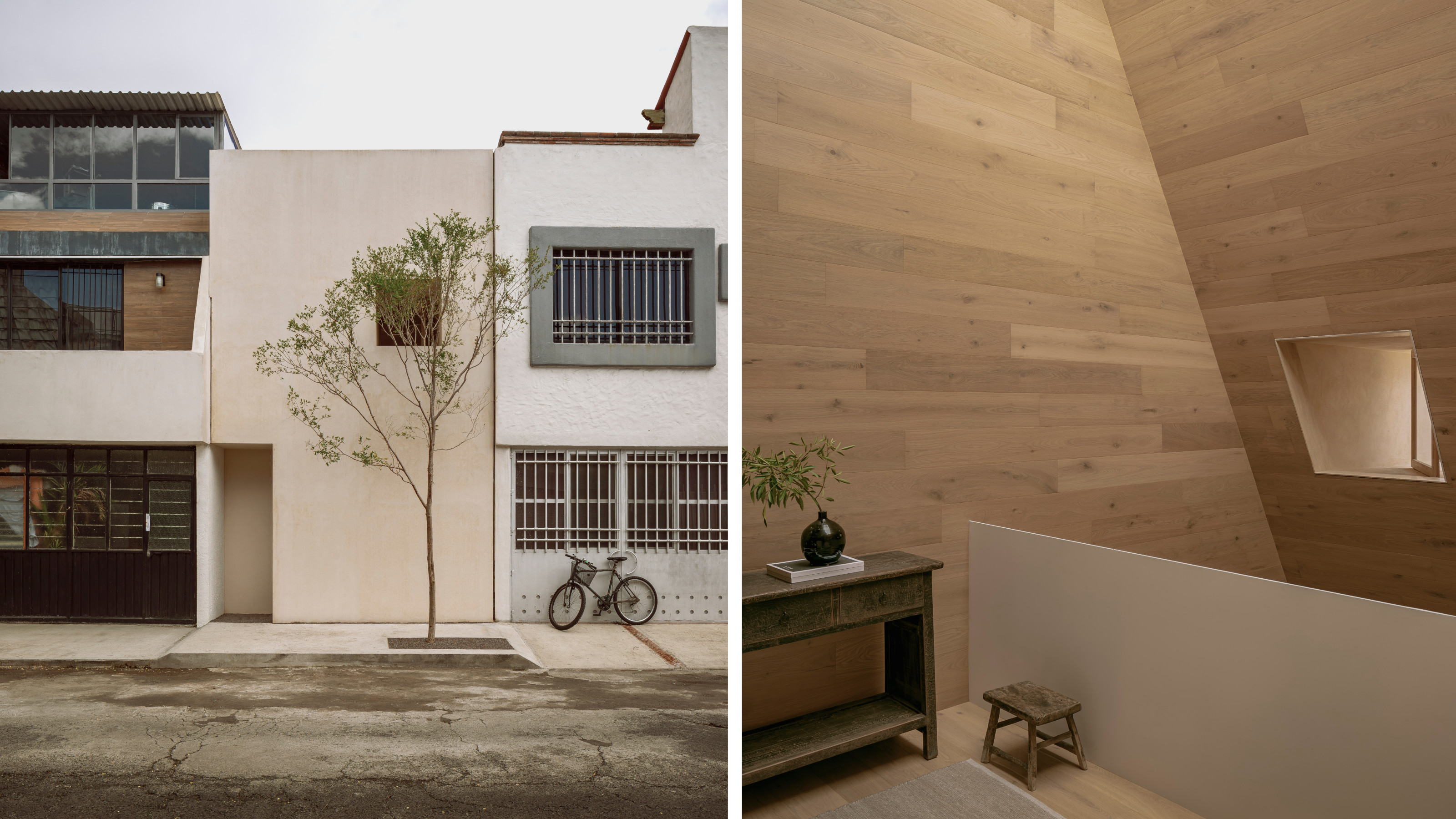 HW Studio’s Casa Emma transforms a humble terrace house into a realm of light and space
HW Studio’s Casa Emma transforms a humble terrace house into a realm of light and spaceThe living spaces in HW Studio’s Casa Emma, a new one-bedroom house in Morelia, Mexico, appear to have been carved from a solid structure
By Jonathan Bell